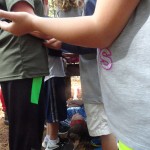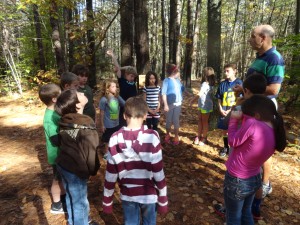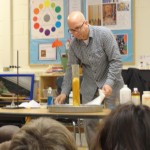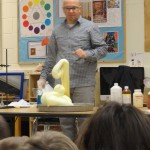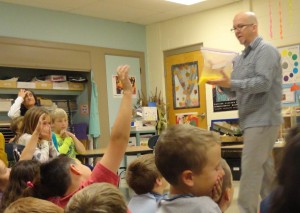 Zing! Another week has flown by full of great accomplishments. This is our second week being part of the Primary Blogging Community. This week we sent comments to a 2/3 class in Windsor, Ontario. It was fun read about the things they are learning and to consider what things are the same and what things are different in their classroom and school.
Zing! Another week has flown by full of great accomplishments. This is our second week being part of the Primary Blogging Community. This week we sent comments to a 2/3 class in Windsor, Ontario. It was fun read about the things they are learning and to consider what things are the same and what things are different in their classroom and school.
Writing With An Audience in Mind
Commenting is one type of writing that will most definitely have an audience – and right away. As the children write their comments for other students they have to put themselves in another person’s shoes and consider, “how would this comment make me feel?” They can also imagine being on the other side of the communication as they write and are thinking, “will someone know what I mean?” Ordinarily when those thoughts and questions occur, the children go and ask. That can’t be done with a blog. It is really stretching their thinking as they work to make all their writing more clear and interesting.
We are using these same insights in our narrative writing. As we develop the story that happened in a place where we play, we are trying to find way to share the details that will make that story interesting. We are also thinking of ways to set the tone of the story. Will it be full of drama or will it be calm and quiet? We are also considering audience as we describe ourselves as learners and set our goals for the year. We are trying to be clear as we describe what we can do now as learners, readers, writers and mathematicians and what we hope to accomplish in this during this third grade year.
Researching and Asking Questions Like a Scientist
As a class we are learning about trees. We are becoming dendrologists -scientists who learn about every part of woody plants and know how to support their healthy growth. We have been reading about trees and singing about trees. We have been using this class study as a model for individual research projects. The children have chosen to learn about lightning, tornadoes, jaguars, fish, insects, saber tooth tigers, whales, Jupiter, vultures, and more. It is fun to question and wonder, discover answers and connections and then begin the process all over again.
We are learning lots of information. We are also learning different ways to share and present this information. As we work together to learn about trees we are taking note of how the information is presented. We are noticing what is helpful to us as learners. What makes information clear? What details are interesting? What is confusing and what is fun.
Knowing and Using Multiplication
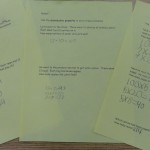
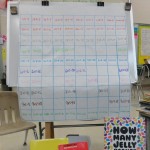 This week when you look at your child’s math work, I think you will see some real changes. Many of them are feeling more certain of their work with multiplication. They know more facts and they have begun to trust themselves to know without adding or counting.
This week when you look at your child’s math work, I think you will see some real changes. Many of them are feeling more certain of their work with multiplication. They know more facts and they have begun to trust themselves to know without adding or counting.
We are learning about the distributive property and working with larger amounts. The distributive property helps you break or the math term – decompose, one factor into smaller amount for multiplying. For example 13×8 becomes (10×8) + (3×8). The two smaller facts are ones we know and so the math is done more efficiently and more accurately now that we are not counting. Counting is often close, but not always correct. There were lots of “a-ha’s” this week.
We have been building a chart of the facts we know. There are 100 multiplication facts. We know the 1’s, 10’s, 2’s and 5’s. We can figure out the 3’s – with a few challenges and that means that we know 70 of the 100 already. And knowing that there are only 30 left helps us know that learning these facts are possible.
Bit and Pieces
- When we added word study work to our homework this week, one of the challenges was to create a story around the number words. To encourage that kind of thinking and creating we have been reading number books this week. We’d like to thank Mrs. Duffy for being a guest reader and sharing some of her favorite counting books with us: One, If Mom Had Three Hands and The Bat Jamboree. We’re read 10 Black Dots, Bunches and Bunches of Bunnies. We’ve counted and added, multiplied and divided. We’ve learned about square numbers and noticed lots of patterns. I wonder if anyone will be inspired to create a story about numbers.
- Last Friday our challenge with Mr. Caron was the Trust Fall. It was both scary and fun. Everyone challenged him or herself to take some risk either by falling from the platform or lying underneath the arms to watch a person falling into the catch. After the fall, Mr. Caron asked the class if they felt they could trust each other. He asked us if we worried about what others would think or say in our class and so we didn’t speak out or share. Sadly, a third of the class said they felt that way. Clearly we have some important work to do building trust through empathy in our classroom.
- Knowing ourselves well is a first step in that. Our work with Multiple Intelligences is a step in that direction. Learning about how we learn and coming to know ourselves more clearly can help us accept ourselves, quirks and all.
- Check with your child to see what’s happening in The Quirks – Circus Quirkus. What will happen because of Finn’s booby traps? What is Mrs. DeVille going to do? And the circus…what class will win? Who will be in it?
- Ask about the science demonstration we had today. What did we see, learn and wonder? Science is certainly exciting and wonder- full!
